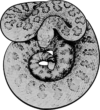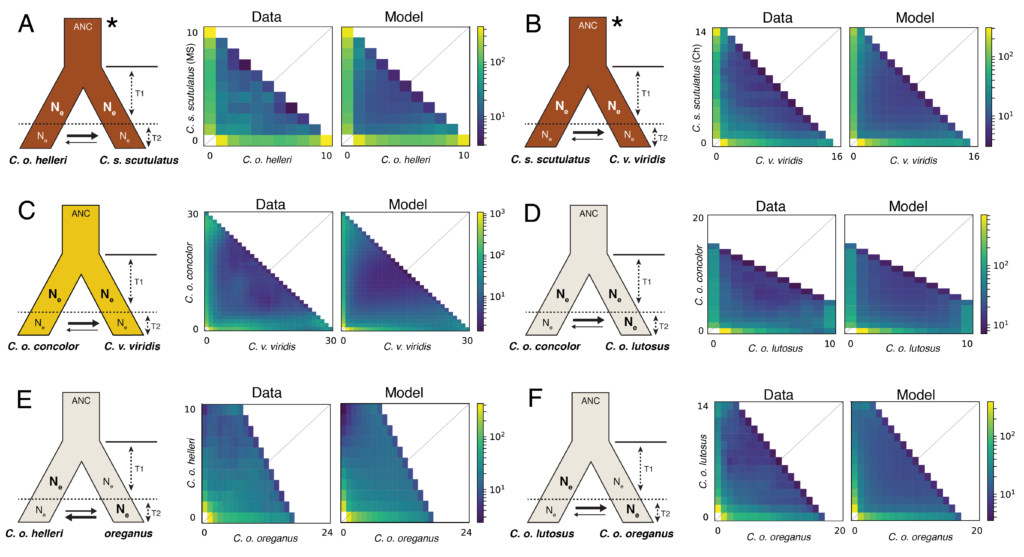Our new paper documenting pervasive secondary contact with gene flow in a rattlesnake species complex is out in the Biological Journal of the Linnean Society!
Here, we used mitochondrial and nuclear data to investigate population structure, gene flow, and demographic histories throughout the Western Rattlesnake species complex (Crotalus cerberus, Crotalus viridis, Crotalus oreganus, Crotalus scutulatus, and relatives). The systematics of this complex have been historically contentious, with various studies suggesting anywhere from two to 11 species. In this study, we show that secondary contact with gene flow has pervasive throughout the evolutionary history of this group, occurring even between anciently diverged lineages. The complex evolutionary history of this complex provides a new perspective as to why species delimitation within this group has been so difficult, and highlights the Western Rattlesnake species complex as a valuable system for studying gene flow, reproductive isolating mechanisms, and selection in hybrid zones.
Congrats to Drew and Blair and all co-authors!
Schield, D.R.*, B. W. Perry*, R. H. Adams, D. C. Card, T. Jezkova, G.I.M. Pasquesi, Z. L. Nikolakis, K. Row, J. M. Meik, C. F. Smith, S. P. Mackessy, and T. A. Castoe. Allopatric divergence and secondary contact with gene flow – a recurring theme in rattlesnake speciation. 2019. Biological Journal of the Linnean Society. (*Co-first authors) Link

